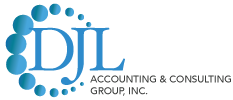Financial Management Tips for Medical Professionals Part 3
6 Strategies to Achieve Success in 2025
Physicians, now is the ideal time to focus on maximizing your contributions to tax-advantaged accounts. Whether your goal is to save for medical expenses, secure a comfortable retirement, or reduce your taxable income, there are several strategies you can implement to make the most of the available opportunities.
By taking advantage of higher contribution limits and making smart investment choices, you can set yourself up for long-term financial success.
Here’s how to start making the most of your options today:
1. Maximize HSA Contributions
If you're covered by a high-deductible health plan (HDHP), as many financial experts recommend, you’re eligible to make tax-deductible contributions to a Health Savings Account (HSA).
For 2025, you can contribute up to:
- $4,300 (single coverage)
- $8,550 (family coverage)
Additionally, if you’re age 55 or older, each spouse can contribute $1,000 more as a catch-up contribution.
While contributions must stop once you begin receiving Medicare benefits, the best part is that you can continue using the funds tax-free for medical expenses for the rest of your life. But don't leave your HSA funds sitting idle in a no-interest checking account; invest them to accumulate extra earnings over time. Many doctors make the mistake of letting these funds sit without growth.
By investing your HSA, you can increase your overall wealth for future medical expenses.
2. Fund IRA Contributions
If you or your spouse has earned income, you can contribute up to:
- $7,000 per spouse (or $8,000 if 50 or older) to a non-deductible IRA.
This is a great opportunity to build wealth since your contributions grow tax-deferred.
These funds are also protected from the 3.8% Obamacare tax on personal investment income, which makes them a solid investment choice.
By contributing now, you're setting yourself up for tax-efficient growth, allowing you to benefit from long-term compounding interest and build a more secure retirement.
3. Convert Traditional IRAs to Roth IRAs
If your income exceeds the eligibility limits for direct Roth IRA contributions:
- $165,000 (single)
- $246,000 (married)
You can still convert your traditional IRA contributions to a Roth IRA each year.
This allows you to enjoy future tax-free growth on your investments. The benefit here is that while you’ll pay taxes on the amount you convert now, you won’t have to worry about taxes on the growth or withdrawals later in retirement.
Tip: To minimize the tax hit from your Roth conversion, roll over any taxable IRA funds into your 401(k) or another retirement plan before converting. This strategy helps avoid additional taxes on the funds you're converting.
4. Max Out Your 401(k) Salary Deferral
In 2025, the contribution limits for 401(k) salary deferrals have increased:
- $23,500 (under age 50)
- $31,000 (age 50 or older)
- $34,750 (ages 60-63)
These higher limits offer a great opportunity to significantly reduce your taxable income for 2025.
Divide your maximum contribution by the number of pay periods in 2025 and start deducting from your first paycheck.
If you're married, ensure that your spouse is also making the maximum salary deferrals, either through your practice or their own employer, to double your family’s tax savings.
5. Set Up Auto-Withdrawals for Retirement Plan Contributions
The contribution limits for 401(k) profit-sharing plans are also higher in 2025:
- $70,000 (under age 50)
- $77,500 (over age 50)
- $81,200 (ages 60-63)
Once you've made your salary deferrals, you can contribute the remaining balance to a 401(k) profit-sharing plan.
Set up auto-drafts from your practice account to have these contributions automatically invested.
Why Auto-Draft?
Auto-drafting helps ensure that you save consistently throughout the year, preventing you from missing contributions. Plus, it helps you take advantage of dollar-cost averaging, which reduces the risk of emotional investing decisions (aka buying high and selling low). By investing regularly, your contributions can grow steadily and with less volatility.
6. Optimize Your Salary for Retirement Contributions
Your salary directly affects how much you can contribute to retirement plans, so it's important to set it at the right level.
In 2025, the $350,000 salary cap is key:
- Going above this limit won’t provide extra benefits.
- Higher salaries only increase your income and payroll taxes, while reducing your practice’s profits eligible for dividend distribution (which avoids payroll taxes) and the 20% practice profit deduction under Section 199A.
You also want to be careful not to set your salary lower than the $350,000 cap without consulting one of DJL’s experienced tax advisors.
A lower salary might save you some payroll taxes, but it could result in lower retirement contributions for yourself and higher contributions for your staff, reducing the potential for your own retirement growth.
Why Act Now Instead of Waiting?
Investing early in the year, rather than waiting until the end, can have a significant impact on your wealth over time.By contributing to your retirement plans early, you give your investments more time to grow, and that compounded growth can be substantial.
For example, investing early could help you accumulate an extra $600,000 over a 30-year career, assuming a 6% return.
Don’t wait until the end of the year, start now for the best results.
By implementing these strategies now, you can take advantage of the new contribution limits and maximize your tax savings in 2025.
It’s all about starting early and making the most of your opportunities; so, take action today and set yourself up for long-term success!
Information Sourced From: https://www.mcgillhillgroup.com/
- Debra Rodway's blog
- Log in to post comments



